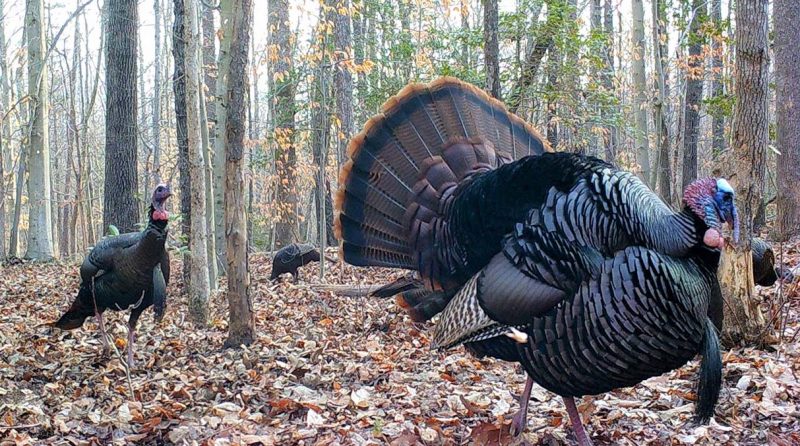
For the Old Dominion’s spring gobbler hunters, the turkey season officially gets underway this weekend on Saturday, April 10. The season runs through Saturday, May 15.
Katie Martin, the deer, bear, and turkey biologist for the Virginia Department of Wildlife Resources (DWR), offers some insights for this year’s season,
First, one of the most important indicators of how good a spring season will be is the poults per hen (PPH) figure. Every July and August, DWR staff record their observations of young bird flocks. Since in any given season, 2-year-old toms are typically the ones that make up the majority of the harvest, the 2019 PPH is the one most relevant to this spring. The news here is not good.
Martin reports that statewide the number of turkeys seen per 1,000 miles driven in 2019 (nine turkeys/1,000 miles) was below the 2018 ratio (12 turkeys/1,000 miles) and continued a decline that began in 2014. In 2019, statewide the PPH ratio was 2.5, which is close to the long-term survey average (2.6). Although the 2019 ratio was much better than the 2018 one of 1.6, this bit of good news is tempered by the fact that the 2018 figure was the lowest ever recorded for the survey.
Martin says that the North Mountain region, where several counties have some of the lowest turkey densities in the state, offers encouraging news. That region had the highest PPH ratio (3.6) in Virginia in 2019. Martin says that good reproduction was also seen in the Tidewater (2.9), South Piedmont (2.6), and Southwest Mountain (2.5) regions where P/H ratios met or exceeded the state average (2.5).
The North Piedmont, though, recorded a ratio of only 1.6 PPH. Although this was a slight uptick from 2018, this continues a declining trend of both turkeys seen and PPH in this region. This spring, North Piedmont hunters may find 2- and 3-year-old toms in short supply.
Martin says that although statewide the annual growth rate has been 1.6 percent over the past decade, turkey populations in the Old Dominion have basically stabilized. As would be expected given its rich soil and farm country habitat, the Tidewater Region boasts the highest turkey density in the state. Hunters with access to private land here have a good reason to be optimistic.
Public land turkey hunting is always a challenge, says Martin, but hunters utilizing the George Washington and Jefferson National Forests in the North Mountain region may have a particularly tough year due to low population densities and long-term habitat decline in this area. Hunters should hone in on areas with recent management activities such as timber harvests or prescribed burns that provide better habitat diversity for turkeys and many other wildlife species.
Finally, all-day hunting is permitted only during the last two weeks of the spring season. The season bag limit is three birds; no more than two birds can be taken in the fall season. If two birds were taken in the fall, only one bearded bird can be taken in the spring. If one bird was harvested in the fall, two may be taken in the spring.
Do remember the following:
Bag Limit
One per day, bearded turkeys only. Hunters may take one, two, or three bearded turkeys depending on how many turkeys were taken in the fall season.
Season Dates
April 10 through May 2 statewide. One-half hour before sunrise until 12 noon each day.
May 3 through May 15, statewide. One-half hour before sunrise to sunset.


